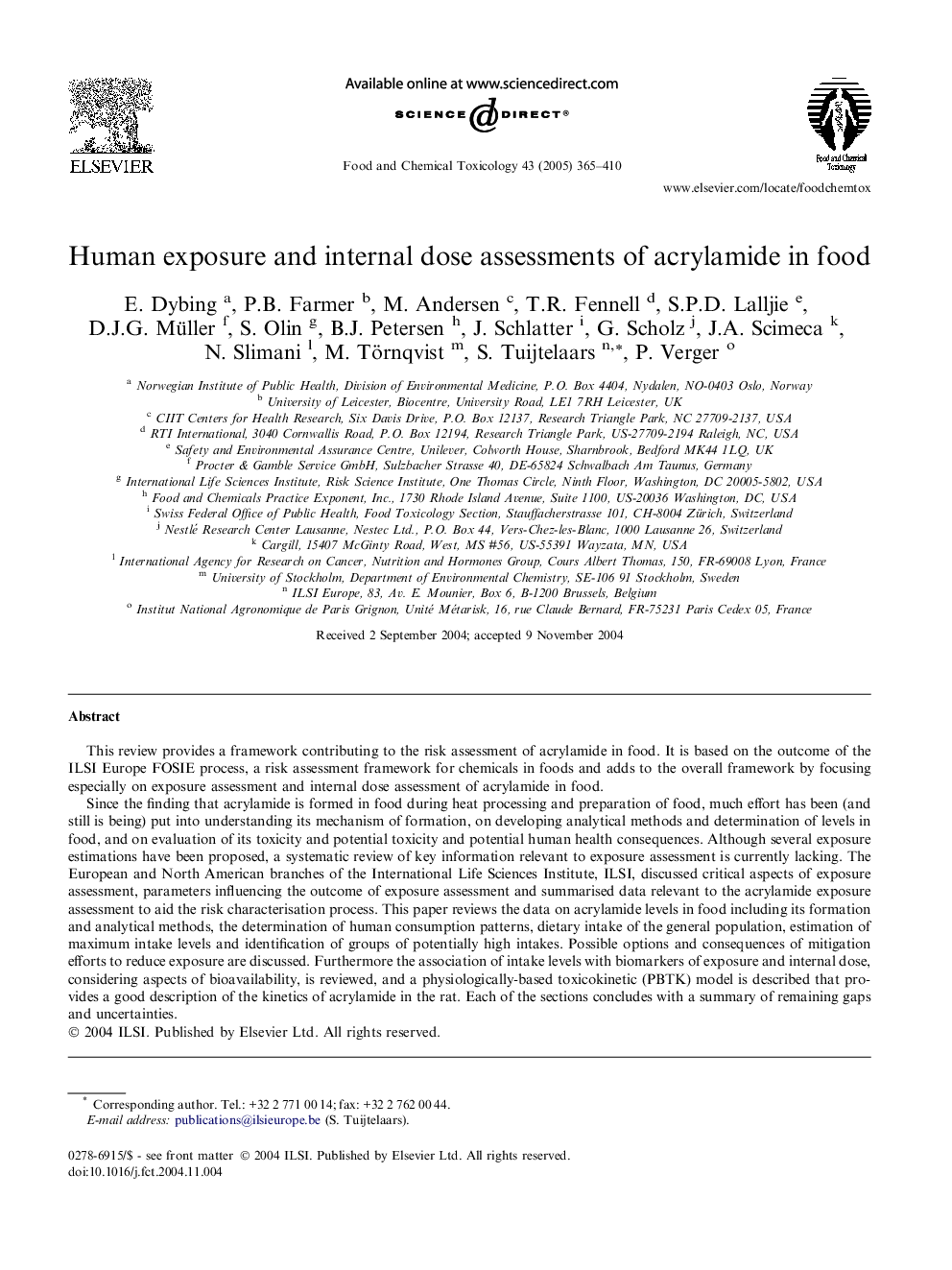| Article ID | Journal | Published Year | Pages | File Type |
|---|---|---|---|---|
| 9031115 | Food and Chemical Toxicology | 2005 | 46 Pages |
Abstract
Since the finding that acrylamide is formed in food during heat processing and preparation of food, much effort has been (and still is being) put into understanding its mechanism of formation, on developing analytical methods and determination of levels in food, and on evaluation of its toxicity and potential toxicity and potential human health consequences. Although several exposure estimations have been proposed, a systematic review of key information relevant to exposure assessment is currently lacking. The European and North American branches of the International Life Sciences Institute, ILSI, discussed critical aspects of exposure assessment, parameters influencing the outcome of exposure assessment and summarised data relevant to the acrylamide exposure assessment to aid the risk characterisation process. This paper reviews the data on acrylamide levels in food including its formation and analytical methods, the determination of human consumption patterns, dietary intake of the general population, estimation of maximum intake levels and identification of groups of potentially high intakes. Possible options and consequences of mitigation efforts to reduce exposure are discussed. Furthermore the association of intake levels with biomarkers of exposure and internal dose, considering aspects of bioavailability, is reviewed, and a physiologically-based toxicokinetic (PBTK) model is described that provides a good description of the kinetics of acrylamide in the rat. Each of the sections concludes with a summary of remaining gaps and uncertainties.
Related Topics
Life Sciences
Agricultural and Biological Sciences
Food Science
Authors
E. Dybing, P.B. Farmer, M. Andersen, T.R. Fennell, S.P.D. Lalljie, D.J.G. Müller, S. Olin, B.J. Petersen, J. Schlatter, G. Scholz, J.A. Scimeca, N. Slimani, M. Törnqvist, S. Tuijtelaars, P. Verger,
